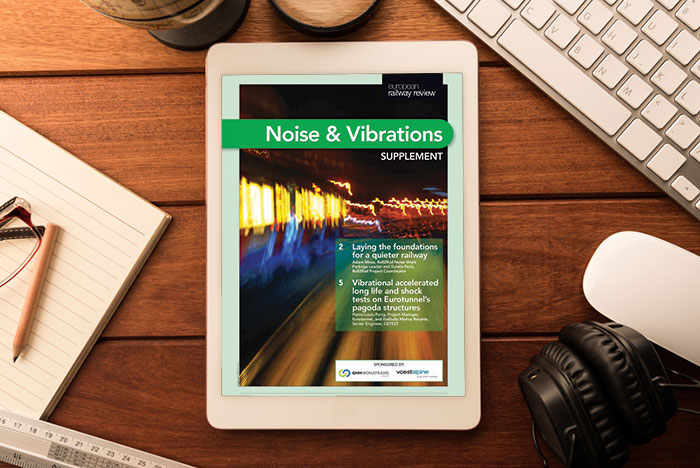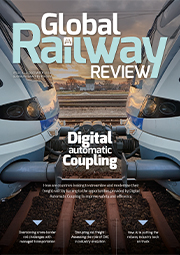Noise & Vibrations supplement
Posted: 9 December 2015 | Global Railway Review | No comments yet
In our latest free-to-view Noise & Vibrations Supplement, Roll2Rail colleagues Adam Mirza and Eulalia Peris cover how the research project can lay the foundations for quieter railways, plus there’s a technical article about vibrational accelerated long life and shock tests on Eurotunnel’s pagoda structures…


- Laying the foundations for a quieter railway
Roll2Rail, a large collaborative railway research project has begun its investigation into addressing future noise challenges outlined in the Shift2Rail Master Plan. The work will focus on developing rolling noise separation techniques that will help explain, describe and control the different physical mechanisms that contribute to rolling noise during the pass-by of a train. The findings will help progress towards a quieter railway and will contribute to future vehicle and track designs that minimise noise emissions. Adam Mirza, the Noise Work Package Leader within Roll2Rail, and Eulalia Peris, the Project Coordinator, explain further. - Vibrational accelerated long life and shock tests on Eurotunnel’s pagoda structures
Due to the dynamic and aerodynamic effects of rail transit through tunnels, and as reference in this article to lorries loading and unloading on Eurotunnel wagons, railway structures are suffering forces which can potentially lead to fatigue failures. Railway engineers have tried to design structures that can withstand these negative forces, and now there are several standards that give guidelines for designing and testing main railway structures in terms of fatigue – but, they also consider exceptional events such as accidents or collisions. Fulfilling these standards is critical for determining safety aspects prior to commissioning newly-designed railway wagons for commercial operations. Pierre-Louis Percy from Eurotunnel and Estibaliz Muñoz Recarte from CETEST, explore further.
This Noise & Vibrations supplement is restricted - login or subscribe free to access


Why subscribe? Join our growing community of thousands of industry professionals and gain access to:
- Bi-monthly issues in print and/or digital format
- Case studies, whitepapers, webinars and industry-leading content
- Breaking news and features
- Our extensive online archive of thousands of articles and years of past issues
- And it's all free!
Click here to Subscribe today Login here




